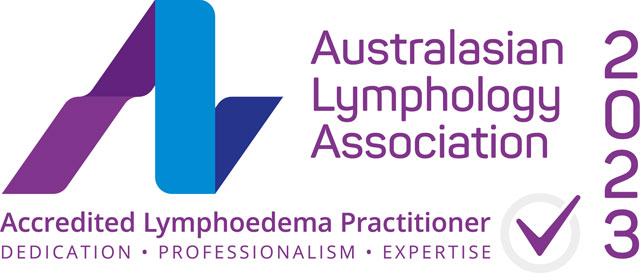What is Lymphoedema?
Lymphoedema is a chronic condition where the lymphatic vascular system is compromised and is unable to maintain the body’s homeostasis of fluid removal. The result of this is a swollen limb, or limbs. This could occur from damage/removal of the lymph nodes, lymph vessels, or due to malformation of the lymph nodes.
“My husband and I had a problem as we watched his leg increase in size. Tests revealed no abnormalities. The medical profession did not confirm anything more than that he needed to wear a stocking. A physiotherapist told us there were specialists in the practice of lymphatic drainage. Finding Michelle relieved us of a great burden and worry and her professionalism and skill has resulted in a positive outcome.” – Diedre K.
Symptoms & Presentation
Primary lymphoedema:
- The person is born with lymphatic insufficiency (congenital lymphoedema);
- Develops in teen years at onset of puberty (lymphoedema praecox);
- Onset in adulthood (lymphoedema tarda);
- Women (85%) are more effected than men (15%).
Secondary lymphoedema:
- Can occur following cancer treatment with the removal of lymph nodes with or without radiotherapy (radiotherapy increases the risk of lymphoedema by 30%);
- Following some surgeries/trauma to the nodes and vessels;
- Vascular deficiency/disease;
- Infections such as cellulitis or filariasis;
- Obesity;
- Immobility.
Lymphoedema may not arise directly after trauma but can occur years later. It is here where education & awareness are key to prevention & management.
The most effective way to treat Lymphoedema
Complex decongestive (lymphoedema) therapy is the most effective way to treat lymphoedema and includes the following five areas:
- Education and psycho-social support – to help you understand your lymphatic system and how to best manage and live with lymphoedema;
- Skincare – well-nourished skin can better protect itself against the effects of chronic oedema;
- Exercise – is safe, helpful and protective for those at risk of or living with lymphoedema;
- Manual lymphatic drainage (MLD) massage –a personalised MLD plan can be devised based on how your lymphatic system is working and can be used in combination with the four other strategies;
- Compression therapy – is the most effective strategy to keep the tissue fluid moving and keep the swelling well controlled.
All five areas are important, so a combination of options that works for the individual is optimal rather than just focusing on a single aspect of management.
What to expect during your Lymphoedema treatment
- A complete case history will be taken;
- Dr Vodder method of Manual Lymphatic Drainage treatment;
- Self-massage techniques;
- Lymphatic system education;
- Lymphoedema triggers, prevention & skin care explained;
- Base line measurements are taken – case specific;
- Discussion of ongoing treatment protocol;
- Please allow 1.5 hours for your initial treatment.
Treatment & Results
Patient A
76 Year old female.
Secondary lymphoedema.
Treatment
Bandaging and manual lymphatic drainage treatments for 3 weeks.
Result
Limb size reduced by 45.5%.
Before

After

Patient B
80 year old male.
Phlebolymphedema / secondary lymphoedema.
Treatment
Wraps and manual lymphatic drainage for 3 weeks.
Result
Limb size reduced by 26.7%.
Before

After

Patient C
72 year old female.
Secondary lymphoedema.
Treatment
Manual lymphatic drainage, wraps then moved into compression stockings.
Result
Treatment ongoing.
Before

After

The South Coast Lymphatic Clinic does not diagnose conditions. We strongly encourage you to seek medical advice first.





